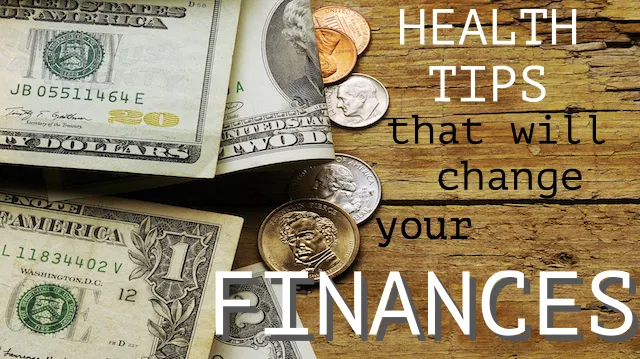
- Share on Facebook33
- Share on Pinterest
- Share on Twitter
We’ve all heard — or said — that eating and living healthily is expensive. While this is true to some extent, since many processed foods are cheaper than fruits and vegetables per serving, there is another side to the healthy living story.
When looking to save money in any area of life, sometimes it helps to stop looking at the cost of an item, and instead look at how you can rework the situation to save money on a larger scale. Let’s take a look at just what that means…
One of the most important things you can do is to take advantage of the simplicity behind healthy eating. It doesn’t have to be hard, or expensive, to fill your plate with nutritious, affordable foods. There are plenty of ways to save money when you’re deciding what you’ll have for dinner each night or what you’ll eat first thing in the morning.
A healthy lifestyle is best achieved when you embrace simple living in all areas of your life. Here are five ways to enjoy an affordable healthy lifestyle:
Eat mostly (or all) plant-based, whole foods
Starting in the kitchen, revamp your fridge and pantry and take out all the processed stuff. These foods might be cheap, but those empty calories may cost you more in health expenses in the future. Basically, you’re wasting your money on chemicals, sugar, and refined grains, and not providing your body with the nutrition it needs.
Make smart purchases: whole foods fill you up quicker because they deliver the maximum nutrition to your cells quickly and efficiently. This leaves you satiated and gives you the energy to tackle more throughout the day. A diet rich in whole foods also helps to prevent major illnesses, like heart disease and diabetes.
While unprocessed, organic, grass-fed meats do offer a healthy source of protein and many health benefits, they can be expensive. If you eat meat and you’re on a budget, try only eating meat at certain meals, or on certain days of the week — not at every meal.
Also, buying large cuts (such as a roast or a whole chicken) is more economical than buying smaller portions, since a roast can be eaten as leftovers, and chicken bones can be made into a delicious homemade stock.
For the majority of your meals, emphasize whole, plant-based foods. Here are some of the best options:
- Kale
- Sweet potatoes
- Spinach
- Collards
- Avocado
- Celery
- Cucumbers
- Zucchini
- Peppers
- Tomatoes
- Berries
- Pineapple
- Lentils
- Split peas
- Chickpeas
- Quinoa
- Flax
- Chia
- Coconut
- Hemp
- Amaranth
- Mushrooms
- Herbs
- Black beans
- Kidney beans
- Black-eyed peas
- Winter squash
- Tahini
- Almonds/almond butter
- Cashews/cashew butter
You get the gist? You don’t need pricey superfoods to eat a healthy diet, though they are wonderful additions if you can afford them. You can eat healthy and delicious meals without them. Take advantage of nature’s cheapest superfoods, such as these five superfoods you can afford.
Shop locally and seasonally
Save money on all these healthy foods by shopping at your local farmers’ market, produce stands, and nearby farms. Visit the supermarket the day a sale starts, and stock up on all their organic and seasonal produce to get the best of the bunch. One smart tip is to buy more when a food is in season, and then freeze what you cannot immediately eat.
Not only are you supporting local farmers and the organic movement when you do this, but you’re also maximizing your dollars for ultimate nutrition. You might also want to look up a co-op online to save even more — or start your own!
Exercise each day
You might be wondering how this can save you money, but take a look at your health-care bill. Whether you pay for medical expenses or not, it’s worth thinking about natural ways to prevent major types of disease, like heart disease, diabetes, and even cancer. These major forms of disease, along with obesity, depression and even digestive issues, can all be improved by daily exercise.
Moving the body works the organs and improves blood pressure, blood sugar, and circulation. Not to mention, it facilitates the movement of toxins out of the body, which is important for overall health. Exercise is very important for brain health, as well. Regular movement stimulates activity in the brain. It challenges you, which is important for hormonal balance and a sense of drive and motivation, and it also boosts the body’s natural endorphins.
Exercise is a preventative and therapeutic activity that we can all do, even without a gym membership, and it doesn’t have to take much time out of the day. It also doesn’t have to be costly.
Take a walk outside for 45 minutes, and don’t check your emails while you do it. Really put the effort into enjoying the time, and allow it to be a special part of your day, just for you. Or, try a yoga class on YouTube — many are free these days, and are often less intimidating than taking a class.
If you’re more outgoing, start a fitness group of your own with a few friends. You’ll save money and motivate each other. Get creative!
Make your own hygiene products (toothpaste, deodorant)
This may sound a bit daunting, but it’s much easier than you think! Mixing a little coconut oil, baking soda, and peppermint essential oil is all you need to make your own toothpaste. Homemade deodorant is as easy as mixing a little baking soda with coconut oil to make a paste. And yes, these actually work!
Utilize simple, natural ingredients like these to serve a multitude of functions and save money over time. For instance, coconut oil can also be used as a moisturizer and shaving cream, baking soda can be used for cleaning, and peppermint oil (as well as many other essential oils) can be used for therapeutic purposes in other areas of your life.
Look at the amount of money you spend on hygiene products, then look up recipes or tips online about how to make them at home. Many of these products, such as those mentioned above, are actually really simple, effective, and also more sustainable.
Cook at home
 Finally, cooking at home is one of the best ways you can save money. A meal at a restaurant can cost at the very least 15 to 20 dollars. You can prepare many dishes at home for one dollar or less per serving. A couple of examples? A lentil soup with tomatoes, sweet potato, and kale; or a stew with root vegetables and greens with rice. You can make a meal that’s filling and hearty, yet skinny on the budget.
Finally, cooking at home is one of the best ways you can save money. A meal at a restaurant can cost at the very least 15 to 20 dollars. You can prepare many dishes at home for one dollar or less per serving. A couple of examples? A lentil soup with tomatoes, sweet potato, and kale; or a stew with root vegetables and greens with rice. You can make a meal that’s filling and hearty, yet skinny on the budget.
Not only will cooking at home save you money, but it will also help you get healthier, reach your weight loss goals, and teach your palate to crave real, healthy food. Again, optimizing whole foods in every meal will give you the most bang for your buck, and many can be combined in a slow-cooker to save time and effort.
Or, cook in bulk and pop meals in the freezer to enjoy all week long!
If you like sweets, use your blender to make a morning greens and berry smoothie, instead of grabbing a pastry or treat from a drive-thru. Make your own coffee instead of paying for one every day. Skip the sugar and use coconut crystals or raw stevia leaves instead. You’ll save money and learn what real healthy living is all about.
We don’t often realize how easy it is to live healthfully and save money at the same time. As you can see though, it’s not as hard as one might imagine, and the benefits are outstanding for all areas of life.
What are some other ways you can think of to save money and enhance your health at the same time?
—The Alternative Daily
Sources:
http://www.healthline.com/health-slideshow/reduce-healthcare-costs
http://www.webmd.com/food-recipes/guide/10-ways-save-money-food-shopping
http://www.everydayhealth.com/green-health-photos/ways-to-protect-the-environment-and-your-health.aspx
- Share on Facebook33
- Share on Pinterest
- Share on Twitter

